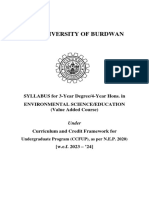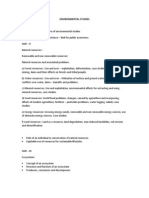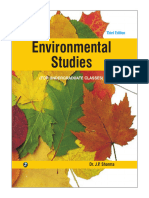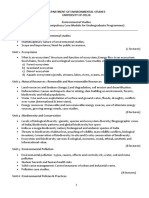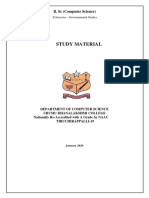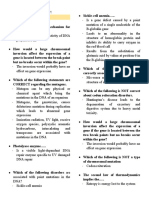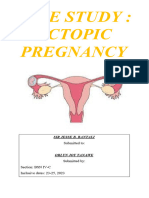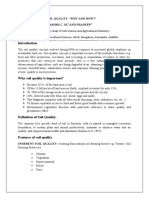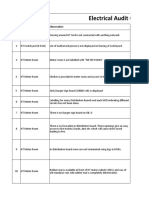0% found this document useful (0 votes)
296 views4 pagesEnvironmental Studies Syllabus
The document outlines the structure and credit distribution for the Environmental Studies course under the CBCS program for B.Sc, BA, B.Com, and BBA/BCA degrees. The course is worth 2 credits total, with 1.6 credits for theory and 0.4 credits for field work. The theory section covers 6 units on topics like ecosystems, natural resources, biodiversity, pollution, environmental policies, and human-environment interactions. Field work involves visiting local polluted sites, studying flora/fauna, documenting environmental assets, or analyzing ecosystems. Students must complete 2 of the 4 field work options and submit a report.
Uploaded by
shibang kumar paulCopyright
© © All Rights Reserved
We take content rights seriously. If you suspect this is your content, claim it here.
Available Formats
Download as PDF, TXT or read online on Scribd
0% found this document useful (0 votes)
296 views4 pagesEnvironmental Studies Syllabus
The document outlines the structure and credit distribution for the Environmental Studies course under the CBCS program for B.Sc, BA, B.Com, and BBA/BCA degrees. The course is worth 2 credits total, with 1.6 credits for theory and 0.4 credits for field work. The theory section covers 6 units on topics like ecosystems, natural resources, biodiversity, pollution, environmental policies, and human-environment interactions. Field work involves visiting local polluted sites, studying flora/fauna, documenting environmental assets, or analyzing ecosystems. Students must complete 2 of the 4 field work options and submit a report.
Uploaded by
shibang kumar paulCopyright
© © All Rights Reserved
We take content rights seriously. If you suspect this is your content, claim it here.
Available Formats
Download as PDF, TXT or read online on Scribd
/ 4















